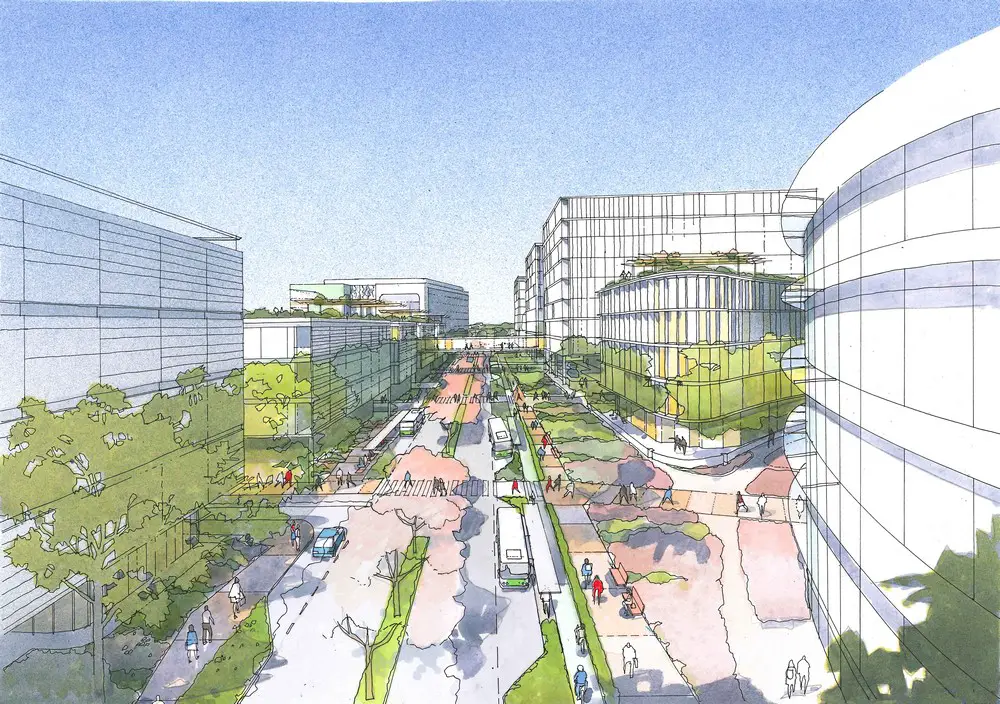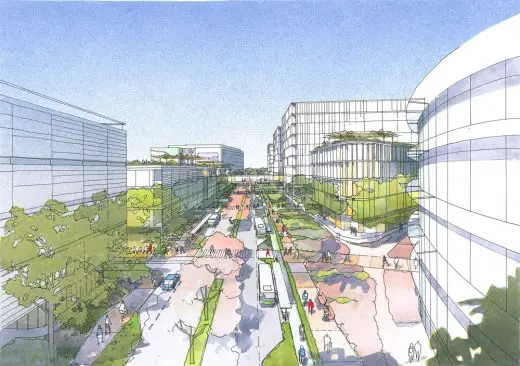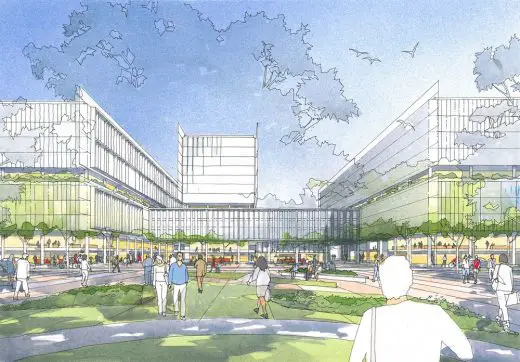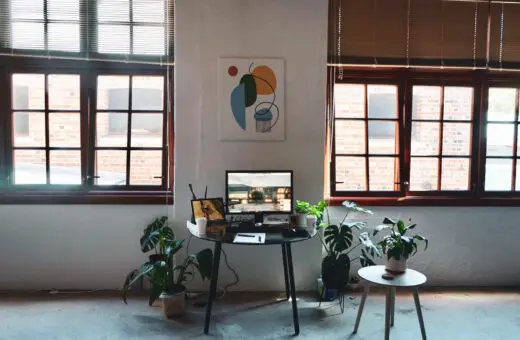Coronavirus urban design impact advice, Architects COVID-19 tips 2020, City architecture guide after pandemic
How COVID-19 changes design of cities?
4 June 2020
Rethinking design: Going viral – how the coronavirus will affect urban design
The COVID-19 pandemic has meant big changes to the ways we interact with each other as a society. Now, with Australia slowly emerging from lockdowns and restrictions, we’re faced with the prospect of returning to normal again. But when it comes to architecture and urban design, what will normal mean? Can it really be business as usual?
Impact COVID19 will have on the design of our cities
‘The pandemic for me personally has created the obvious concerns about health for my family, my co-workers and my friends,’ says Chris Maher, Director and Urban Development Portfolio Leader at Hames Sharley. ‘The deaths are awful, the personal loss and grief are not to be underestimated together with the economic hardships that will and are occurring.
But at the same time architects are excited by the opportunity to be part of changes that may come out of this, because we are agents of change. We want to anticipate in our thinking new ways of designing healthy places and towns that work better during and after such events. The knowledge it’s given us is really important and can help us prepare, manage and hopefully prevent future pandemics.’
Before any changes in urban design can be addressed, however, one of the first concerns urban designers are going to have to respond to is the backlash against density.
‘People are fearful of density now because they associate it with the mass transmission of things like COVID-19,’ says Chris. ‘The Committee for Perth, for example, has been contacted by many people saying, “Obviously I was right, density is not the solution, it’s not as sustainable as everybody says.” And I worry that we’ll all become highly conservative and start talking down density and retreat back into our suburban enclaves. It seems to me that would be step backwards.
‘But it’s really interesting that there’s a lot of people, particularly in places like Italy, who are craving getting out into the streets again and craving meeting their friends and family. It’s about human nature, the clustering of people that’s happened over many thousands of years. People have clustered together for many reasons – safety, security, shelter – basic human needs and instincts that are constant, and I often talk about those when I’m talking about urban design.’
It’s these basic human needs that have ensured urban density has survived past pandemics, from the Great Plague to the Spanish Flu outbreaks of the early 20th century. But that’s not to say there can’t be a middle ground.
‘I do think in terms of the long-term planning for urban design there are models we can look at,’ says Chris. ‘A way of balancing this denser population and also having access to open space and greenery. Garden cities, for instance came about following a desire to improve the health and social wellbeing of city inhabitants, especially following the rapid densification of cities during the industrial revolution. We’re doing work in Canberra at the moment referencing what Walter and Marion Griffin originally proposed in their masterplan, they always saw Canberra as a place where you can have urbanity, but also green spaces and parks with a connection to nature.
‘I think that trend was already happening and the movement towards biophilic design and having access to greenery is going to be amplified by everything that’s taking place.’
Our human need to congregate is also the reason, Chris believes, that our newfound ability to work from home won’t hasten the end of the office building as we know it – no matter that we may already seem to be moving away from office culture as a society.
‘We spent the last 40 years getting rid of cellular offices and working in open plan and even having hot desks – although these may pause for a moment now! – but I think that idea of working alongside others is quite powerful,’ he says. ‘It wouldn’t have lasted so long if that idea of collaboration, sharing light, sharing space wasn’t a genuine one.
‘I think maybe people will we want more space in offices now, and there’ll be a slowing in terms of the hot desk. But the key is flexibility and agility, and I don’t think it’s being flexible and agile if we all go home and stay at home. Just like if we all go back to work, we’re probably not tapping into flexibility and agility either.’
In much the same way, changes in the way we shop could be accelerated by our reaction to the pandemic, but urban designers will still look at keeping us buying in person instead of online.
‘I’m not sure if the days of the big shopping centres and the department store are numbered,’ Chris explains but they will have to change and adapt. ‘They were already under pressure from Amazon.com and online shopping and I think that will only grow with what’s happened with the pandemic. But on the other side we are living in a world where isolation is a problem, and shops and markets are places where people can come together and wander around in close proximity to people without necessarily having to engage with them.’
Recently completed project, Essence Apartments in Perth, Western Australia:
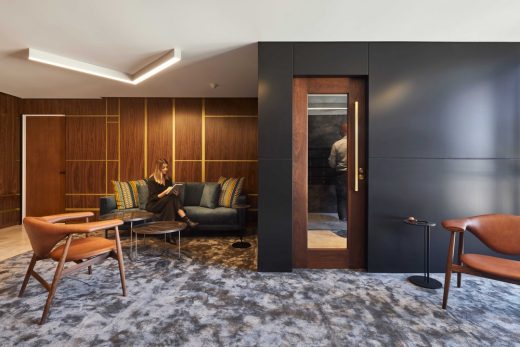
photograph : Douglas Mark Black
This realisation that retail is again moving back towards being a community activity rather than just a transactional one may hold the key to how shopping develops post-pandemic. Indeed, a backlash against being obliged to shop online during lockdown may benefit the cause.
‘I think shops are places of entertainment as well, they can also become more integrated more mixed use hubs with residential density and I think the retailers have realised that it’s more about bringing the community in. Years ago, there were shopping centres with stages in them for events, then in boom times that space was turned into lettable floor area. I know some have now converted it back, and I think people want that; younger people in particular seem to want that experiential existence.’
Overall, then, the knock-on effects of COVID-19 on urban design are more likely to amount to an aggregation of small adjustments and an acceleration of existing movements, rather than wholesale, sweeping change.
‘There are going to be a lot of those conversations over the next few months as we learn what changes are going to occur because of COVID-19 and I don’t think we can predict them all,’ says Chris. ‘How we do things to keep people safe, is what’s important, to satisfy peoples needs and make beautiful places. But what we need to get away from is the fear. We need to be more practical, resilient and better able to cope, and hopefully make our world a better place. We need to assume that this could happen again; how are we going to deal with that? How are we going to be better prepared?
‘And I think that’s the role of all designers and architects: to anticipate and then think of ways of making it better.’
Essence Apartments, Perth, WA:
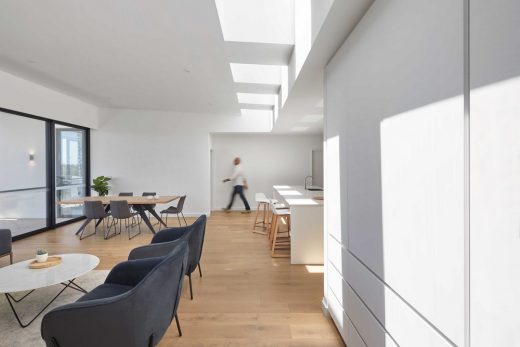
photo : Douglas Mark Black
How COVID-19 changes urban design images / information from Hames Sharley Architects, Australia
Previously on e-architect:
COVID-19 Crisis Impact on Buildings
COVID19 Impact on Hotels & Resorts Guest Journey
COVID19 Impact on guest journey
How COVID-19 changes the way we work
Hames Sharley employees during a Zoom meeting:
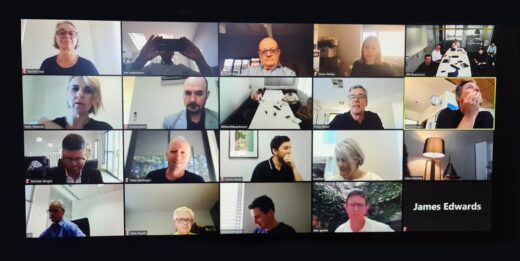
Hames Sharley’s response to COVID-19 virus.
Database for Quarantined Architects
Coronavirus Impact
The impact of coronavirus on the property market
Coronavirus on the property market
Coronavirus (COVID-19): UK government response.
Comments / photos for the How COVID-19 changes urban design – Coronavirus Impact on cities page welcome

